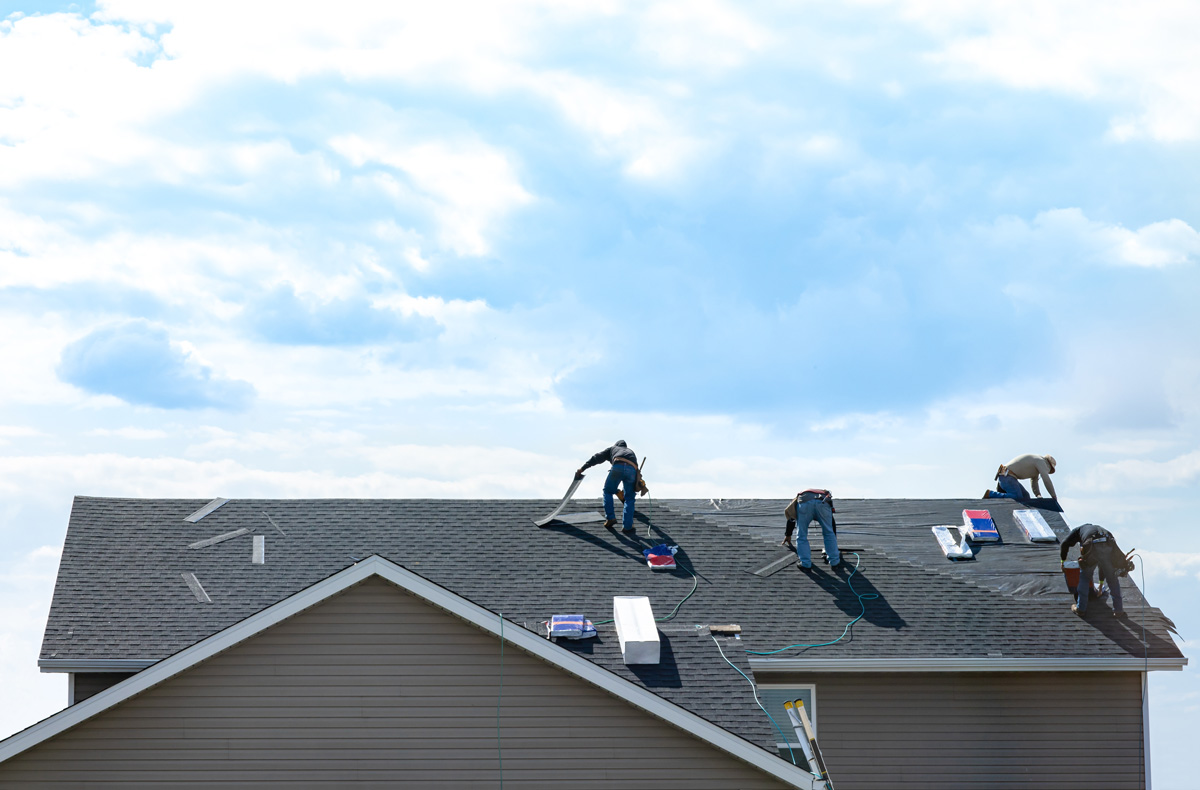Exactly How to Evaluate Various Roof Covering Options for Your Building Needs
Assessing roof options for your structure calls for a thorough technique that takes into consideration numerous elements such as the intended usage of the framework, local climate problems, and material attributes - Roofer. It is essential to evaluate the benefits and drawbacks of various roofing kinds, from asphalt shingles to metal and clay floor tiles, while also factoring in initial costs and long-lasting upkeep.
Analyzing Your Building's Demands
To properly assess roofing choices, begin by extensively evaluating your structure's requirements. Begin by considering the structure's meant usage, as different structures might necessitate differing roof covering specs. As an example, domestic roofs commonly focus on aesthetics and insulation, while industrial buildings may concentrate on toughness and load-bearing capability.
Next, evaluate the neighborhood climate problems that will influence roof performance. Aspects such as temperature level variations, precipitation levels, and wind patterns can influence material option and layout. A roof that excels in a temperate environment may not perform too in areas prone to heavy snowfall or extreme warm.
Furthermore, assess the architectural honesty of your building. Make certain that the existing framework can sustain the selected roof covering products, especially if considering larger options. It is likewise important to evaluate any kind of local building regulations or regulations that might determine particular requirements for roof covering systems.

Comparing Roof Covering Materials
As soon as an extensive assessment of your building's needs has actually been finished, the following step involves contrasting various roof covering products. Each product offers unique advantages and disadvantages, making it important to straighten your selection with your specific demands and scenarios.
Asphalt roof shingles are extensively identified for their price and simplicity of setup, making them a popular option for residential structures. On the various other hand, steel roof, known for its sturdiness and durability, can stand up to harsh weather conditions however might feature a higher initial investment.
Clay and concrete tiles supply excellent thermal insulation and aesthetic charm, particularly for Mediterranean-style architecture, yet they require an even more durable structural assistance due to their weight. Timber drinks deal a natural look and good insulation residential or commercial properties but may require much more upkeep and are vulnerable to fire risks.
Examining Cost and Spending Plan
Evaluating your roof covering choices necessitates a cautious evaluation of expense and budget factors to consider. The total spending plan for a roof project makes up a number of aspects, including product costs, labor costs, maintenance, and possible long-term savings. It is vital to develop a clear spending plan prior to checking out particular roof products, as this will certainly lead the decision-making process and aid you avoid overspending.
Begin by obtaining quotes from multiple contractors to recognize labor costs in your region. his explanation Ensure that these quotes consist of all essential services, such as elimination of the old roof, installation, and any extra features, like insulation or air flow improvements - Roofing Contractor. Next off, analyze the price of different roof materials, thinking about both initial installment prices and anticipated lifespan

Understanding Power Efficiency
Energy efficiency plays an essential duty in the selection of roof covering products and systems, considerably influencing both energy intake and overall comfort within a building. An appropriate roofing system can boost thermal performance, decreasing the requirement for home heating and cooling systems, find out which in turn decreases energy expenses and lessens ecological effect.
When evaluating roof choices, take into consideration products that show instead than soak up warm. Light-colored or reflective roofing products can substantially decrease roof surface area temperature levels, bring about reduced energy usage throughout hot months. Additionally, proper insulation and ventilation are important to enhance the energy performance of the entire roof system. Insulation protects against warm transfer, while ventilation mitigates warmth build-up in the attic space.
One more essential factor is the roof's long life and maintenance requirements. Resilient products that require much less frequent substitute add to long-lasting power cost savings. Moreover, the energy effectiveness of a roof system can also be examined via its conformity with well-known sustainability ratings such as power CELEBRITY or LEED.
Thinking About Visual Allure
A roofing's visual allure significantly influences the general appearance of a building, matching its building style and improving visual appeal. Sylvania Roofing Contractor. When assessing roof covering options, it is vital to consider exactly how the selected product, shade, and layout will integrate with the existing framework and area. A properly designed roof covering can boost even the simplest of structures, changing them right into aesthetic focal factors
Various roof covering materials provide different visual qualities. Conventional tiles may stimulate a traditional appeal, while metal roof covering can why not try these out give a modern-day, smooth appearance. In addition, the shade of the roof covering product plays an important function; lighter tones can make a building appear more roomy, while darker tones might develop a cozier atmosphere.
Additionally, architectural elements, such as dormers and eaves, can enhance the roofing system's visual impact. It is suggested to seek advice from with expert designers or engineers to make certain the picked roof option aligns with the overall design intent. Inevitably, a roof ought to not only provide useful advantages but also add favorably to the building's aesthetic, showing the proprietor's preference and the character of the surrounding environment.
Conclusion
